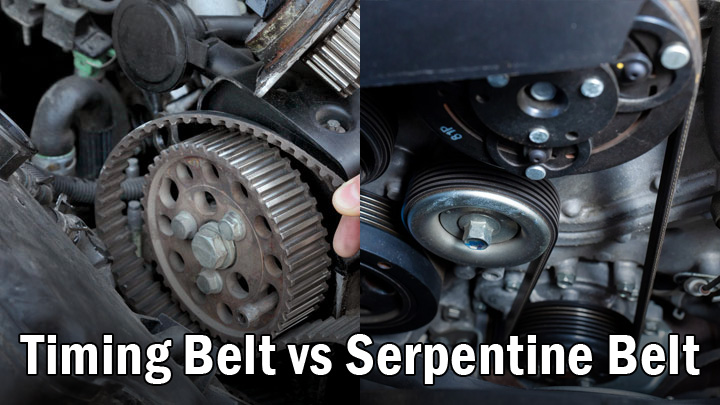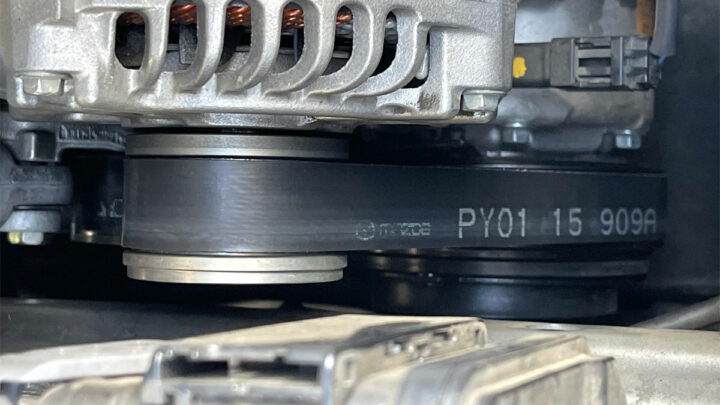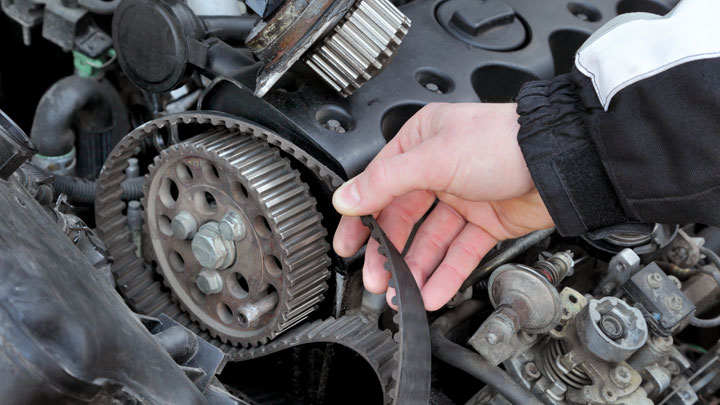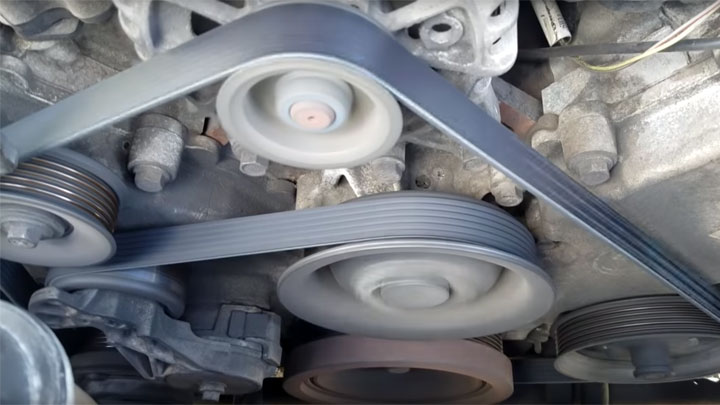Timing Belt vs Serpentine Belt (What’s the Difference?)
When discussing various automotive components, much is often lost in translation. The devil is often in the details, and significant confusion comes to pass when one component is inadvertently referred to by something other than its actual name.
This is often the case when discussing timing belts and serpentine belts.
Though both of these items can be regarded as “belts” in a generic sense, their actual uses are far different from one another. Read on to learn more about the numerous differences between timing belts and serpentine belts.

See Also: Timing Belt Versus Timing Chain
Is a Timing Belt and Serpentine Belt the Same Thing?
A timing belt and a serpentine belt are not the same thing and are often confused by those new to automotive mechanics.
These two belts differ significantly in their general design/purpose, as well as the general effort that is required to facilitate their replacement. This places significant value upon recognizing each of these components for what they truly are.
An engine’s timing belt is essential to the basic operation of an internal combustion engine, as a whole. A belt of this configuration is responsible for keeping an engine’s key rotating assemblies in time with one another, making sure that an engine’s valve positioning is correct in relation to the position of the pistons within each respective cylinder.
This is not to be confused with the serpentine belt, which transfers the rotational energy of an engine’s crankshaft to individual pulleys for each of an engine’s externally mounted, belt-driven accessories.
The most common of these accessories include an engine’s alternator, power steering pump, and A/C compressor. It is also common for an engine’s serpentine belt to span one or more idler pulleys throughout its routing. A belt of this type is also typically acted upon by a tensioner under spring tension.
Differences Between Timing Belts and Serpentine Belts
As mentioned above, timing belts and serpentine belts are not one and the same. In fact, their differences are numerous enough that they are perhaps best broken down by category. These categories are as follows.
Purpose
A timing belt is used to keep an engine’s upper and lower rotating assemblies in time with one another, via direct connection.
By contrast, a vehicle’s serpentine belt is used to drive a number of externally mounted engine apparatuses, such as a vehicle’s alternator and power steering pump, off of the crankshaft itself. Hence, the reason that this component is often regarded as a drive belt or alternator belt.
Design and Composition

Timing belts are designed of a heavier rubberized material than most serpentine belts, and feature pronounced horizontal ribs.
Serpentine belts, on the other hand, are generally narrower and exhibit vertical grooving across the entirety of their contact surface. The exact number of grooves present is dependent upon the number of grooves on an engine’s various pulleys.
Installation/Routing Configuration
A vehicle’s timing belt is installed beneath its engine’s timing cover and runs across both its crankshaft and camshaft sprockets, or across the crankshaft sprocket and both camshaft sprockets in the case of engines of a “V” configuration.
Alternatively, a serpentine belt is installed externally, spanning across the crankshaft pulley and ultimately, across the pulleys of any other crank-driven accessories, essentially taking the place of standard v-belts of the foregone era.
Signs of Wear

Ideally, you’ll want to replace your vehicle’s timing belt before signs of wear become evident. However, if neglected, progressive timing belt slippage and failure can result in the illumination of a vehicle’s check engine light, reduced performance, excessive exhaust smoke, and rough idle.
On the contrary, accelerated serpentine belt wear generally manifests as excessive surface cracking and edge separation. One might also notice that their serpentine belt begins to “squeal” or “chirp”, especially at startup.
Part Cost
In most cases, a timing belt is replaced as a single component within a larger kit, which includes all tensioners needed to prevent slippage. Kits of this nature typically cost $150-$300. It is worth noting that a timing belt itself can often be purchased for a fraction of this price, though replacement without tensioner service is not advised.
By comparison, you can expect to pay $20-$50 for a replacement serpentine belt. Even premium long-life serpentine belts seldom cost more than $80.
Replacement Cost
Timing belt replacement costs can easily approach $500, due to the complexity of the job itself, with some replacement services commanding a price of up to $1,000.
Many choose to also replace the water pump, thermostat, and other nearby components at the same time due to them being much more accessible during a timing belt job than on their own. This of course adds additional short term costs while saving money long term.
Replacement of an engine’s serpentine belt is far more economical, typically costing less than $150 in total, due to the relative simplicity of such efforts. In fact, most motorists with a reasonable degree of basic mechanical aptitude can save money, by successfully replacing their engine’s serpentine belt themselves.

Replacement Frequency
Most manufacturers recommend having an engine’s timing belt replaced every 75,000-100,000 miles, in order to minimize the risk of unanticipated failure.
By comparison, the bulk of today’s belt manufacturers recommend changing a vehicle’s serpentine belt once every 30,000-60,000 miles, or whenever moderate surface cracking becomes evident.
Consequences of Failure
The consequences associated with timing belt failure can be rather extreme. This is especially true in interference applications where a significant lack of timing can result in valve/piston contact, resulting in catastrophic internal engine damage.
On the other hand, the complete failure of an engine’s serpentine belt often leads to a sudden loss of battery charging, power steering, and AC.
But severe damage from serpentine belt failure is quite rare unless the water pump is run by the belt and you continue to run the engine for a length of time. In that case, the engine will overheat which may eventually cause significant damage to cylinder heads, pistons, or engine block.
Maintenance

There is little in the way of maintenance suggested regarding an engine’s timing belt, aside from replacement at specified intervals.
On the other side of the coin, a vehicle’s serpentine belt can be easily inspected at every oil change, or otherwise, at any given time. There are also a number of spray-on belt maintenance products or “dressings” though the use of such products is not openly recommended by most manufacturers.
- P0480 Code (Symptoms, Causes, and How to Fix) - Apr 19, 2024
- Car Temperature Gauge Stopped Working? (Here’s Why) - Apr 15, 2024
- Ignition Coil vs Coil Pack (What’s the Difference?) - Apr 8, 2024
